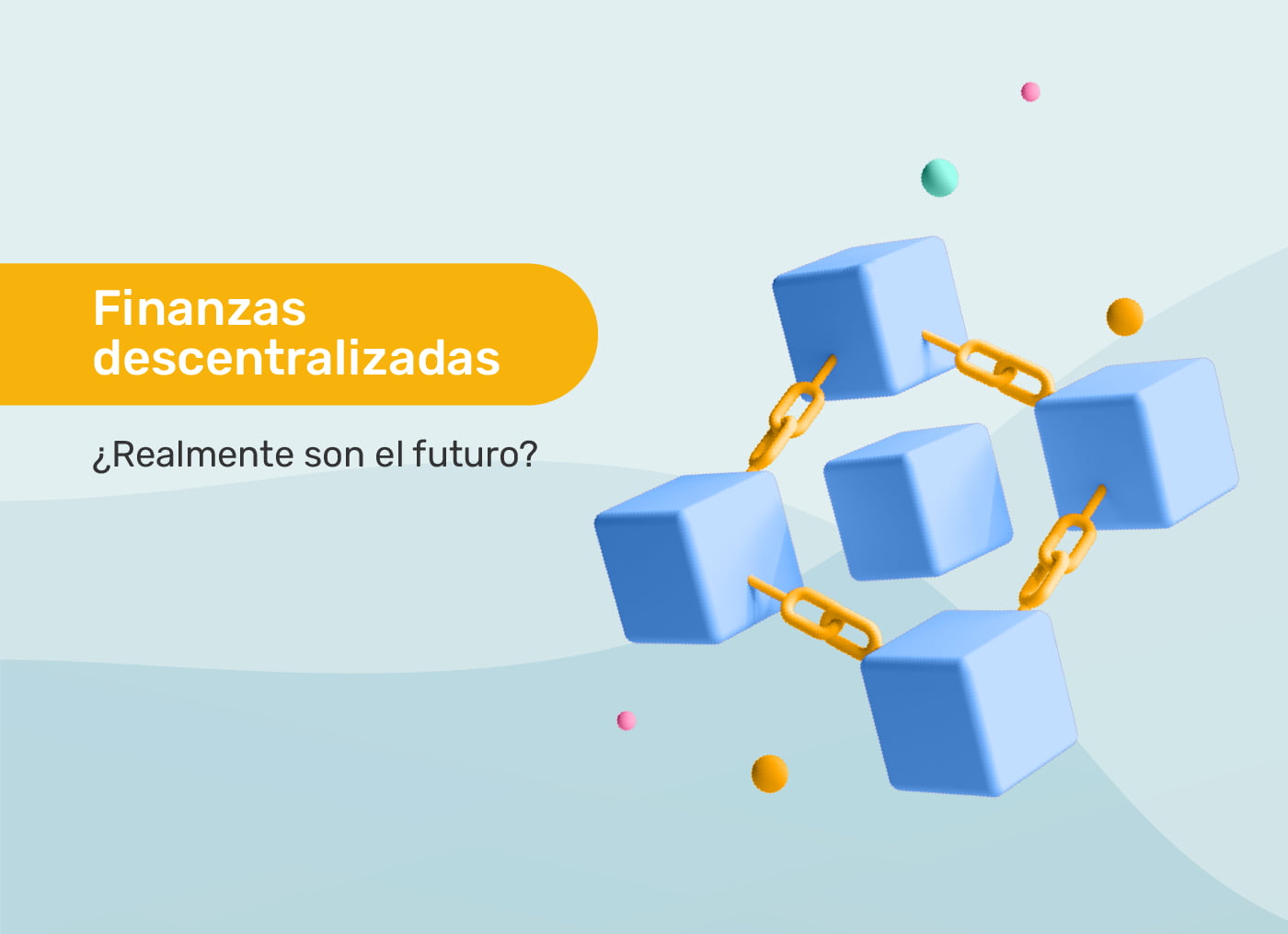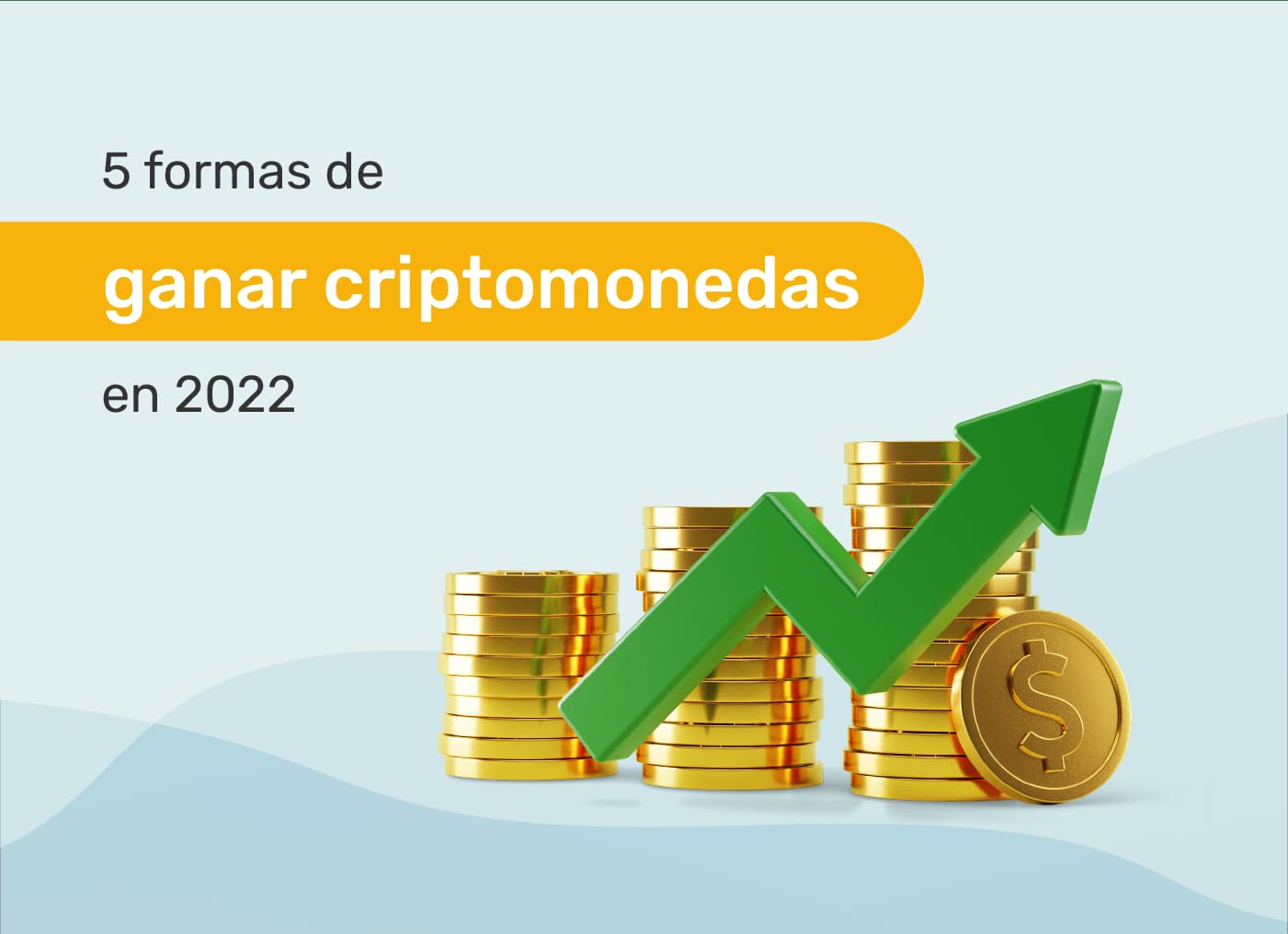Decentralized finance (DeFi) is hopeful for many and a threat to others, as U.S. Senator Elizabeth Warren said when referring to them as “the most dangerous part of the world”.
It is common to hear that DeFi is the future of finance and they have arrived to replace traditional banking. But how true is this? Do they really have the power to replace such an ingrained system in society?
If you want to know the answers, keep reading! Because here we explain the basic aspects of DeFi and if they are really the finance of the future.
What are they?
The term DeFi refers to an ecosystem within the crypto universe, in which a new financial system is being built using blockchain technology. In this ecosystem, traditional intermediaries and trust mechanisms are replaced to make way for the exchange of assets and financial services directly between their participants, in a decentralized manner.
Does this mean that DeFi is the equivalent of banking in the crypto world? Not quite, although they are an alternative that Seeks to leave traditional banks in the past; their operation is more similar to Wall Street, since they include lending platforms, prediction markets and even options and derivatives. All this without the bureaucracy that governs the current financial system.
While financial decentralization has been promised since Bitcoin's inception, in practice users faced obstacles that prevented Bitcoin from achieving this goal on its own.
So it wasn't until 2014, with the rise of MakerDAO, that a wide variety of decentralized financial services began to emerge. However, until recently they had very limited adoption, but thanks to the rise of other platforms and applications, In 2020, transactions carried out by smart contracts went from just moving 1 trillion dollars to more than 15 trillion, while already by May 2021, the historic figure of 20 trillion dollars was reached.
How do DeFi work?
As we told you before, the essence of DeFi is found in the blockchain, which, in a nutshell consists of a network that allows participants to connect to each other without the need for a central server, where data can be transferred securely. This is what makes it possible to impart a decentralized character to this new financial system.
In addition, the DeFi are governed by smart contracts that execute themselves when the established parameters are met previously by the parties.
this allows participants' data to be stored in a decentralized and encrypted way, that it is impossible to modify the history of the transactions carried out while ensuring that the parties involved comply with established agreements. For this, blockchain ecosystems such as Ethereum and Celo are used.
Benefits of DeFi
If DeFi basically performs the same functions as the traditional financial system, why prefer them? What benefits do they bring to be considered a Game Changer?. Well, despite being new, they honestly offer several advantages, which we explain below.
- They provide greater accessibility: basically anyone with the internet can access DeFi, so you don't need a government-issued ID or any other document.
- They streamline financial processes: since there is no need for intermediaries between the parties, financial transactions can be carried out more quickly.
- They have a high adaptability: Because they are built using open source, users can constantly improve the ecosystem, allowing them to evolve and adapt to the needs of the users.
- They avoid corruption and bureaucracy: since orders are only executed when the parameters of the smart contracts are met.
- They promote financial inclusion: allowing vulnerable people excluded by the traditional financial sector to access loans and other financial instruments backed by cryptocurrencies.
- They have high levels of security: thanks to blockchain technology, which uses cryptography to maintain the security of the entire ecosystem.
- The needs of users are prioritized: since there are no centralized institutions that control them, the development and functioning of the ecosystem is based on the needs of the counterparties.
Will they replace the traditional financial system?
Everything will depend on the determination of users and the adaptability of traditional banking, which is looking for alternatives to implement native DeFi features, with the aim of preventing users from going to the decentralized ecosystem.
Equally, there are those who seek to regulate DeFi, which would limit their ability to continue expanding; however, due to its decentralized nature, it is a rather complicated task.
Despite the fact that DeFi has only been around for a few years, there are solid reasons to believe that the traditional financial system could be replaced by a more decentralized one based on cryptographic technology.
Optimists believe that since there are no human intermediaries and work with blockchain technology and open source, there are fewer commissions, greater efficiency and transparency. this allows users to have greater power over their money and the ability to directly influence the functioning of the ecosystem.
In addition, by allowing people to access tools that were previously only exclusive to professional investors, a system in which investments are democratized would be consolidated.
On the other hand, there would be no possibility of discrimination, since by allowing anonymous participation, anyone could access services such as loans, regardless of whether you are an immigrant, stateless person or if you are facing an unfavorable economic situation, this represents a fairly competitive advantage over the traditional financial system and therefore represents a real threat to it.
So even though there are few optimistic views, There are strong odds and reasons to believe that DeFi is here to stay and unbank or at least force it to evolve the traditional banking system and fulfill Bitcoin's original promise: to give people more power over their finances, without the need for intermediaries.
How to use them?
Considering the benefits and that they will probably be widely used in the future, you will surely want to start being part of them. But how can you start being part of decentralized finance?
Really using DeFi is much easier than opening a bank account, the only essential requirements are having access to the internet and a virtual wallet or wallet, where you can save the tokens received. These can be purchased with legal tender currencies such as dollars or euros, although It is usually more difficult to carry out transactions when you only have local currencies that are less popular in the ecosystem, such as pesos, bolivars, and others.
Of course, to ensure the security of your wallet, you must take into account strict security measures, and keep in mind that since there is no centralized entity that protects the assets, the transactions carried out do not have legal protection. In addition, it is extremely difficult to know the identity of the counterparty, which involves certain risks.
So if you prefer to access cryptocurrencies or tokens with the ease provided by DeFi, and at the same time have a backup that keeps your transactions protected, too you can use applications that are built around this ecosystem, such as El Dorado, which allows you to buy cryptocurrency using your legal tender, even if you're in Latin America.
Would you like to join El Dorado? Sign up, get verified and start buying and selling cryptocurrency through our P2P, which is leveraged on blockchain technology provided by Celo.





